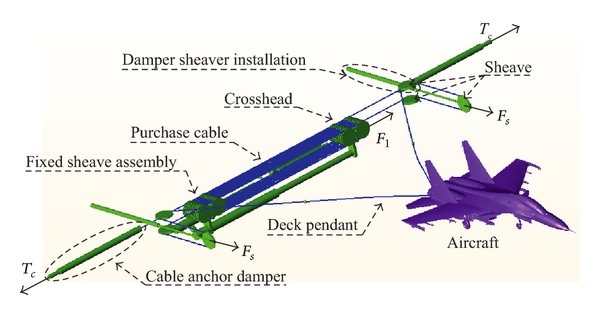How to Engage Aircraft Arrestors
Engaging aircraft arrestors is the process of activating the arresting system so that it can quickly and safely decelerate an aircraft during emergency landings or aborted takeoffs. Proper engagement of aircraft arrestors is critical for the safety of pilots, passengers, and ground personnel, as well as for preventing damage to aircraft and infrastructure.
In this article, we will discuss the two main methods for engaging aircraft arrestors: manual engagement by a person on the ground and automatic engagement through control systems, such as Supervisory Control and Data Acquisition (SCADA) systems. We will also explore the benefits of using SCADA engineering for engaging aircraft arrestors.
Manual Engagement
In some situations, a person may need to go to the aircraft arrestor site and engage the arrestor manually. This process typically involves pressing buttons or activating switches on the arrestor system's control panel. Manual engagement is more common in smaller airfields and older arrestor systems that do not have advanced control systems in place.
Manual engagement requires personnel to be trained in the proper operation of the arrestor system, as well as the appropriate safety procedures to follow during engagement. This can include understanding the correct sequence of actions, staying clear of the arrestor cables or nets during activation, and maintaining clear communication with other personnel on the ground and in the aircraft.
Automatic Engagement
Automatic engagement of aircraft arrestors involves the use of advanced control systems, such as SCADA, to monitor and control the arrestor system remotely. These control systems can automatically engage the arrestor when specific conditions are met, such as detecting an aircraft approaching the runway at an unsafe speed or angle. Automatic engagement can also be triggered by a command from air traffic control or other personnel monitoring the situation.
Automatic engagement systems offer several advantages over manual engagement, including faster response times, reduced human error, and improved safety for ground personnel. By automating the process, SCADA and other control systems can continuously monitor and adjust the arrestor system to ensure optimal performance and safety in a variety of situations.
Benefits of SCADA Engineering for Engaging Aircraft Arrestors
SCADA engineering offers several benefits when used for engaging aircraft arrestors, including:
- Improved safety: By automating the engagement process and reducing the need for manual intervention, SCADA systems can help minimize human error and improve overall safety for pilots, passengers, and ground personnel.
- Faster response times: SCADA systems can monitor aircraft and airfield conditions in real-time, allowing for faster engagement of arrestors when necessary. This can be especially important in emergency situations where every second counts.
- Reduced maintenance costs: SCADA systems can continuously monitor the health and performance of the arrestor system, allowing for proactive maintenance and reduced downtime. This can result in lower overall maintenance costs and increased system reliability.
- Centralized control: SCADA systems can integrate with other airport systems and provide centralized control and monitoring capabilities. This allows for more efficient management of airport operations and better coordination between different departments and personnel.
Engaging aircraft arrestors can be done either manually, by a person physically activating the arrestor system, or through automated systems, such as Supervisory Control and Data Acquisition (SCADA) systems. SCADA systems offer numerous advantages, including remote monitoring and control, improved safety, and enhanced efficiency. Learn more about SCADA systems from Entech Engineering and TechTarget.
Global Data Specialists is a leading provider of SCADA engineering solutions, offering a range of services to help airfields and aircraft carriers optimize the performance and safety of their arrestor systems. To learn more about their services, visit their website at https://www.gbl-data.com/.

Conclusion
Engaging aircraft arrestors is a vital process to ensure the safety and efficiency of airfields and aircraft carriers during emergency landings or aborted takeoffs. With the advancement of control systems like SCADA, the process has become more automated, reliable, and efficient, minimizing human error and improving overall safety. By understanding the methods and benefits of engaging aircraft arrestors, airfields and aircraft carriers can continue to operate safely and effectively in a variety of situations.